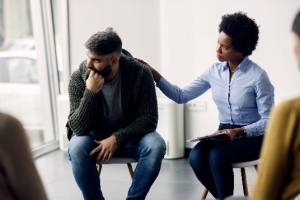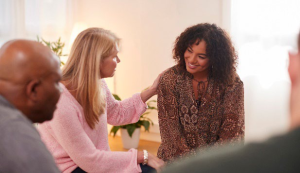
By Steven Lalich for Marin Department of Health and Human Services
August 30, 2022
September is Suicide Prevention Awareness Month ─ a time to raise awareness of this stigmatized health issue. Along with behavioral health organizations across the country, the Marin Department of Health and Human Services uses this month to spread hope and vital information to people affected by suicide.
 Todd Schirmer, Interim Director, MHHS, Behavioral Health and Recovery Services, said, “Suicide Prevention Awareness Month is a time dedicated for all of us to come together with compassion and strength to address this difficult topic. We can all benefit from honest conversations about mental health and suicide because one conversation can change or save a life.”
Todd Schirmer, Interim Director, MHHS, Behavioral Health and Recovery Services, said, “Suicide Prevention Awareness Month is a time dedicated for all of us to come together with compassion and strength to address this difficult topic. We can all benefit from honest conversations about mental health and suicide because one conversation can change or save a life.”
The County’s Board of Supervisors approved the Marin County Suicide Prevention Strategic Plan in August 2020. The cornerstone of the plan was the Marin County Suicide Prevention Collaborative, a multi-sectoral group of public and private agencies and individuals, including loss survivors, attempt survivors, behavioral health specialists, and many more.
The Collaborative is led by co-chairpersons, has numerous community action teams, and is supported by Marin’s first suicide prevention senior program coordinator. The focus of the Collaborative is to implement strategies like:

The Collaborative pursues a socio-ecological framework that provides a structured approach to understanding and implementing prevention, intervention, and postvention strategies ─ activities that reduce risk and promote healing after a suicide death ─ at the individual, community, and institutional levels.
One community action team ─ the Men and Boys Action Team ─ works to promote the belief that it is a sign of strength to ask for help. Another organization, the Felton Institute, is contracted with the county to support those who have experienced a loss due to suicide through the newly established Local Outreach to Survivors of Suicide (LOSS) team. Sophia Balestreri, Felton’s LOSS program coordinator and a 13-year survivor of suicide, said, “Suicide survivors are uniquely connected by this extraordinary loss and the complicated grief that follows. As a LOSS survivor, you may not see any signs of hope, but it’s there ─ in a quiet voice at first, but one that builds as the days, weeks, and years unfold. You will be able to hear, see and feel hope once again.”
 Between 2016 and 2020, there were 206 deaths by suicide among Marin County residents. In 2021, data for Marin County residents again indicated a decrease in suicide from the previous five years. The provisional data from 2021 shows that 29 Marin residents died by suicide, compared to 35 in 2020 and 46 in 2019.
Between 2016 and 2020, there were 206 deaths by suicide among Marin County residents. In 2021, data for Marin County residents again indicated a decrease in suicide from the previous five years. The provisional data from 2021 shows that 29 Marin residents died by suicide, compared to 35 in 2020 and 46 in 2019.
Suicidal behaviors and thoughts in our community impact individuals across race, life span, and gender. White middle-aged and older men are disproportionately impacted by suicide. Men make up 49 percent of the population of Marin and 83 percent of deaths by suicide in 2021. However, suicide can be prevented through connection: Over the past four years, 83 percent of the time, first responders negotiated with someone at the Golden Gate Bridge and successfully intervened.
The Substance Abuse and Mental Health Services Administration (SAMHSA) is the agency within the U.S. Department of Health and Human Services that leads public health efforts to advance the nation’s behavioral health. In July, SAMHSA launched the new 988 number as a three-digit dialing, texting, and chat code for anyone in distress.
Kara Connors, suicide prevention coordinator, MHHS, BHRS, said, “Too many people are experiencing a suicidal crisis or mental health-related distress without the support and care they need. This new number will allow people to connect with support during a crisis, 24/7, no matter where they live.”
If you or someone you know needs support, there is help. Call or text 988.
Copyright © 2024 Lalich Communications